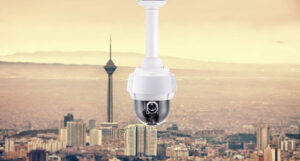
Panoramic PTZ cameras deliver several benefits. Most noteworthy is its ability to replace several fixed IP cameras and lower camera count, as well as provide better situational awareness, giving operators a seamless panoramic view of the scene.
Lowered Camera Count
Multi-sensor panoramic cameras enable the coverage of larger areas; thus, replacing the need to install several single-sensor IP cameras. Combining two sensors and lenses in one housing can allow the camera unit to cover an area of up to 180 degrees. On the other hand, fixed IP cameras provide a narrow field of view as they are typically limited to a 90-degree angle at most. Panoramic cameras can cover a field of view from 180 degrees when installed at the side of a building and up to 360 degrees in cases when it is, for example, mounted on a pole in a parking lot.
Lesser Number of IP cameras, More Benefits
Reducing the number of IP cameras required for a project brings several benefits to the table. All these advantages together can save both the integrators and end users time and money.
One advantage of this is that less work is required for installation and cabling. Newer Panoramic camera models are PoE-operated, allowing the same cable for network connection to be also used for power which eliminates the need for separate power cabling. Additionally, since the camera only has one IP and MAC address, it will potentially only require a single VMS license, significantly lowering the cost as compared to having several fixed IP cameras covering the same area. However, this might vary between VMS as some might be charged per stream.
There is also an operational efficiency benefit because the investigator wouldn’t need to switch between various IP cameras and different screen views, but instead he can manage everything from one screen; thus, reducing investigation time.
Last but not least is aesthetics. Aesthetics is an important consideration for property managers and large campuses like hospitals and colleges. Instead of having several IP cameras mounted on the same wall pointing at different directions, one panoramic camera can solve this problem. For example, a four-sensor camera can effectively cover 270 degrees with one sensor facing forward, one facing down, and two others pointing to the sides that can act as PTZ replacements. In this way, one camera mounted on a corner of a building can replace four fixed IP cameras covering the same field of view.
Better Situational Awareness
The wide field of view panoramic cameras deliver gives operators greater situational awareness, especially since they won’t need to switch between several IP cameras or watch scenes via tiled view which would not be so intuitive. Multi-sensor cameras can blend and stitch together images from different sensors, allowing users an instant understanding of the scene and giving them the ability to zoom in on specific details.
Panoramic cameras have not the downside of Traditional Multi sensor IP cameras. Although these IP cameras are more than capable of covering wider areas, they are good for capturing details of specific spots. Panoramic PTZ cameras are designed with higher pixel counts which can effectively increase the camera’s range for detection and monitoring purposes; moreover, accurate identification and recognition are possible at remote ranges.
Real-time Monitoring and Recording
One of the strongest advantages of panoramic cameras lies in its ability to enable users to combine real-time proactive monitoring like a PTZ camera and recording for forensic and post-event investigation. Using a VMS, operators can zoom in on one part of the scene for a closer look, while the other sensors continue to monitor the rest of the scene. This ability is also true for post-event investigation where it is possible to zoom into parts of the scene even while watching the recording.
Source: a&s Magazine



































































